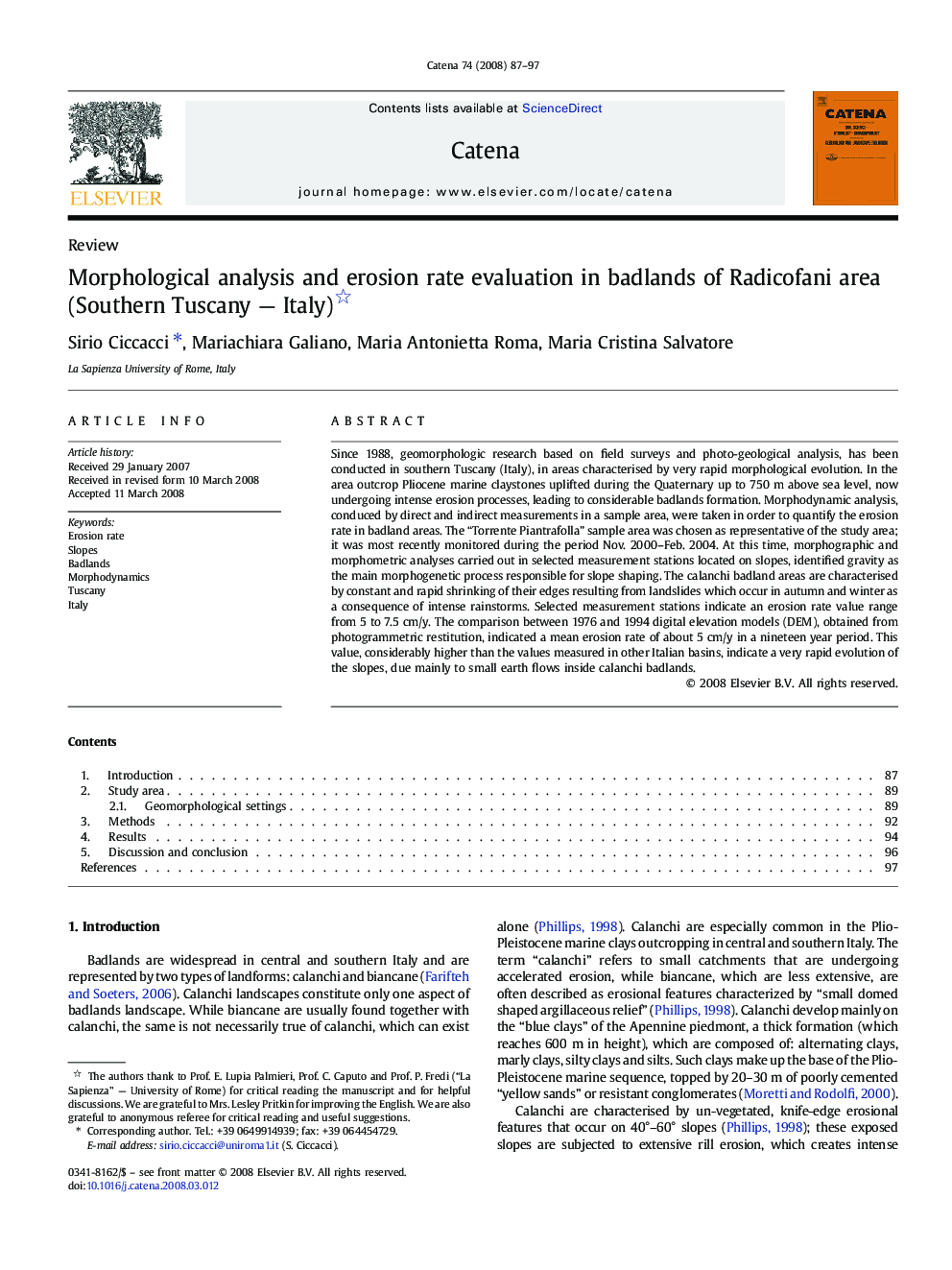| Article ID | Journal | Published Year | Pages | File Type |
|---|---|---|---|---|
| 4572412 | CATENA | 2008 | 11 Pages |
Since 1988, geomorphologic research based on field surveys and photo-geological analysis, has been conducted in southern Tuscany (Italy), in areas characterised by very rapid morphological evolution. In the area outcrop Pliocene marine claystones uplifted during the Quaternary up to 750 m above sea level, now undergoing intense erosion processes, leading to considerable badlands formation. Morphodynamic analysis, conduced by direct and indirect measurements in a sample area, were taken in order to quantify the erosion rate in badland areas. The “Torrente Piantrafolla” sample area was chosen as representative of the study area; it was most recently monitored during the period Nov. 2000–Feb. 2004. At this time, morphographic and morphometric analyses carried out in selected measurement stations located on slopes, identified gravity as the main morphogenetic process responsible for slope shaping. The calanchi badland areas are characterised by constant and rapid shrinking of their edges resulting from landslides which occur in autumn and winter as a consequence of intense rainstorms. Selected measurement stations indicate an erosion rate value range from 5 to 7.5 cm/y. The comparison between 1976 and 1994 digital elevation models (DEM), obtained from photogrammetric restitution, indicated a mean erosion rate of about 5 cm/y in a nineteen year period. This value, considerably higher than the values measured in other Italian basins, indicate a very rapid evolution of the slopes, due mainly to small earth flows inside calanchi badlands.
